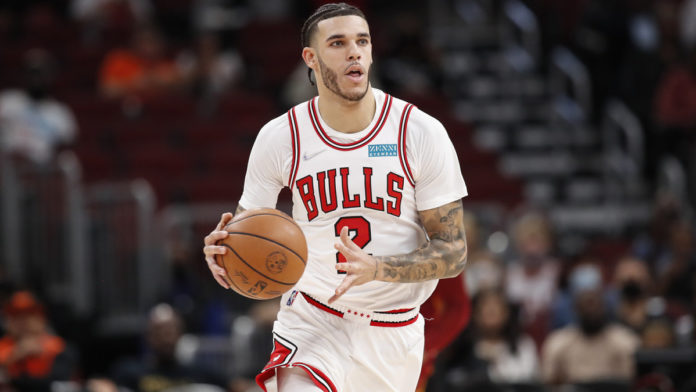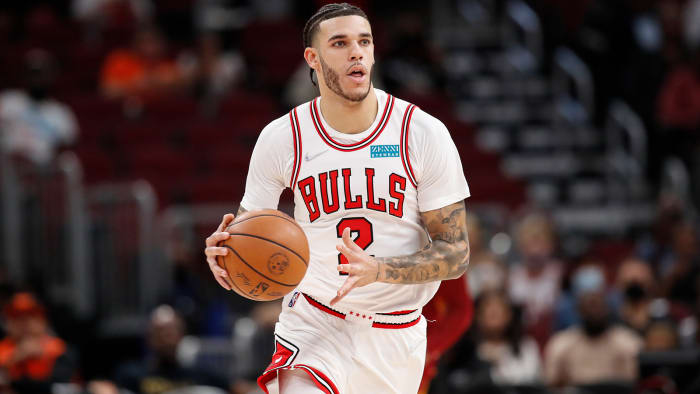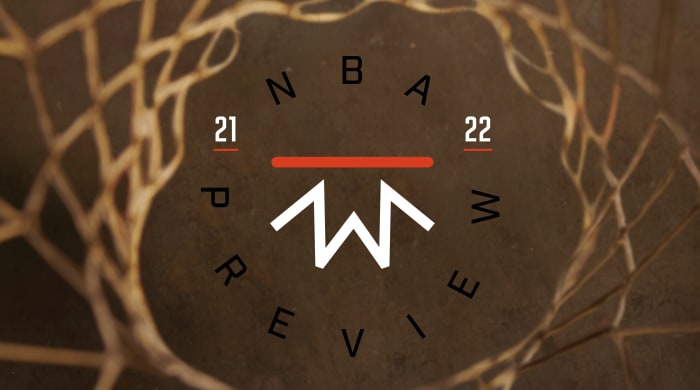The 2021–22 NBA season tips off on Oct. 19, and between now and then the Crossover staff will be analyzing all of the biggest story lines ahead of what promises to be an unforgettable campaign. You can find our NBA preview stories here.
Every NBA season will have its fair share of twists and turns that help decide which teams will find themselves deep in the playoff race. And already, before this campaign even kicks off, we’ve got a number of massive question marks to consider—ranging from injuries to vaccination status to roster fit, and the time it will take overhauled clubs to jell.
With all that in mind, here are seven of the biggest X-factors that could shift the balance of the NBA this year.
Michael Porter Jr., Denver Nuggets
If there’s a team that could really use one of its best players making a leap this season, it’s Denver with Michael Porter Jr.
The Nuggets can’t ask for anything more than what they got out of reigning MVP Nikola Jokić, who was in great shape, played in every game last season and logged career highs across the board—even after sidekick Jamal Murray went down with an ACL tear.
And while that might also seem true of Porter, who last year doubled his scoring output to 19 points per game while shooting even more efficiently than he did in 2020, there’s plenty of room for growth for the 23-year-old. He’s far from a finished product on defense, where he collects a decent number of blocks due to his length but still has a tendency to fall asleep and get lost. But more than anything, it’d be a huge shot in the arm for Denver if Porter can create more of his own offense.
Among players who took 10 shots or more per game, only Kevin Durant logged a better true shooting percentage than Porter’s 66.3%. But 71.4% of Porter’s two-pointers, and 91.8% of his threes, were assisted last season—the sorts of rates we’d generally associate with a role player more than someone with a rookie max extension, like the one Porter just agreed to.
Without Murray this season, far more playmaking opportunities will be available. And while the Nuggets seem like a long shot to win it all this year, they’d certainly feel better about their chances next season—once Murray is back at full strength—if Porter’s playmaking ability gets anywhere near his shotmaking ability.
Lonzo Ball, Chicago Bulls
There’s no question the Bulls considerably upgraded their talent level this past offseason. But the question of whether you feel like they’re merely a decent team with a lot of scoring versus whether you feel they can make noise likely hinges on how you feel about their starting point guard.
If you’re thinking, “Sure, the Bulls have scorers, but they may have too many cooks in the kitchen at this point,” well, that’s where Ball comes in. He’ll be trusted to find a happy medium with the team’s tempo (coach Billy Donovan has said repeatedly he wants and needs this team to play fast, partly to make use of Ball’s passing ability in transition).
Ball will be one of the players—if not the player—defenses shy away from in hopes of taking away Zach LaVine, DeMar DeRozan and Nikola Vučević, so Ball will have to knock down perimeter shots to keep cheating defenders honest. That’ll mean showing he can shoot it efficiently outside the month of February.
Similarly, Ball will be the lone above-average wing defender in the starting lineup, meaning he’ll have to be better than good there most nights in hopes of keeping Chicago in the middle of the pack. Plugging Alex Caruso in alongside him could help significantly in that regard. But the Bulls’ depth at the position defensively may not allow them to trot out that alignment too often.
Rudy Gay, Utah Jazz
Gay was one of the most interesting—and perhaps important—under-the-radar moves in free agency. He joined a Jazz team that needed a skill set exactly like his: a veteran wing who can serve as a three-level scorer and knock down an open look. But even more important, Gay is someone they can break the glass with in case of an emergency, like the one they ran into this past postseason when the Clippers bounced Utah by spreading out the Jazz defense with a hard-to-guard, small-ball strategy.
Specifically, Gay has plenty of experience punching above his weight class as a small-ball center, having done so with the Spurs. (Hell, he’s even done it against the Jazz before.) Similarly, so does Eric Paschall, whom the Jazz acquired from the Warriors via trade.
The Jazz won a league-best 52 regular-season games last year, but did so with a Steve Jobs–sort-of wardrobe on defense: They were going to trot out the same black turtleneck and jeans every night, because they had great success in that outfit. So why change? But that uber-consistent style of play, based on Rudy Gobert’s incredible defensive value, left them flatfooted when it suddenly didn’t work in key moments.
So keep an eye on the Gay and Paschall additions—they’re designed to give Utah more flexibility in a key moment in case an emergency arises, and they’re forced to break the glass.
Frank Vogel, Los Angeles Lakers
The Lakers made perhaps the most surprising trade of the offseason when they unloaded a key portion of their depth in exchange for Russell Westbrook, who will serve as a third star next to LeBron James and Anthony Davis.
SI Recommends
In a way, some might point to Westbrook and call him the X-factor in this scenario. Which would be fair. But Vogel will bear plenty of responsibility in making this work, too, given how much top-end talent he’ll have at his disposal—even if it’s not the most evenly distributed. There’s a reason the Lakers are the betting favorites with a number of sportsbooks.
The key question will be how Vogel helps everyone to coexist. As we’ve written before, Westbrook as a third star sounds wonderful in theory. But unlike Klay Thompson alongside Steph and KD, or a Ray Allen alongside Paul Pierce and KG, Westbrook can’t really make defenses pay for double-teaming the other two star players and leaving him wide open at the arc. Well, he could. But that would require moving, setting screens and cutting toward the basket when he doesn’t have the ball. Which are things he’s never really done throughout his career.
Will Vogel ask him to do those things for the sake of bolstering the offense, which has a chance to be fantastic? And if he won’t, is there a chance he’ll at least heavily utilize Westbrook with the second unit—while James takes breathers—to optimize his ballhandling in a way that doesn’t make James a relative bystander? It’s already easy to see how and where it could be beneficial for Rondo to log considerable minutes with the starters while Westbrook plays large chunks with the backups. (Obviously Westbrook will be the starter.)
Whether Vogel explores those possibilities remains to be seen. But trying them could easily be the difference between the Lakers being in the winner’s circle again at the end of the season, or having a first- or second-round flameout due to an offense that isn’t as fluid as it could be.
Get the Basketball Preview issue here
Julius Randle and RJ Barrett, New York Knicks
When the Knicks caught fire last season, with Randle playing like a borderline MVP candidate and Barrett showing the sorts of glimpses you’d hope to see from a franchise-caliber player, there were questions about whether there’d be a regression to the mean.
All year, there were questions about when and whether the Knicks would come back down to Earth. Randle and Barrett, among others, shot way above their previous percentages from three-point range. Sustainability seemed impossible. And we saw some of that play out in their first playoff showing—Randle shot just under 30%, while Barrett shot just under 39%—which resulted in a five-game ouster at the hands of the Atlanta Hawks.
Some will go into this season expecting a regression to the mean for New York because of how well the club’s two best scorers performed last year. And obviously that’s a possibility. But the addition of starters Kemba Walker (replacing Elfrid Payton) and Evan Fournier (replacing Reggie Bullock) should make life easier for both Randle and Barrett by consistently getting them easier, more open looks than what they had when they bore more responsibility to create their own offense out of nothing.
So don’t be surprised if the shooting numbers don’t tumble as much as you thought they might. Given the quality of the shots they’ll likely get, we could even see a slight increase to begin the season. And that, combined with the defense Tom Thibodeau will demand they play with, could make the Knicks far more interesting than many people realized.
Patty Mills, Brooklyn Nets
Who knows? Maybe Kyrie Irving will get vaccinated and render the vast majority of the last week’s news moot. Maybe he won’t. You never really know what the case will be with Irving.
But as long as there’s a lack of clarity around his game-to-game availability, it will place even more importance on the shoulders of backup point guard Patty Mills, who was quietly one of the biggest pickups for any team this past offseason.
Mills, who has never really been a full-time ballhandler, given all the elite ballhandlers he’s played with in the past. But he can run the offense for stretches—certainly to feel comfortable with him setting things up while Durant takes a breather, or Irving or Harden is off the floor.
Mills has always been a fantastic perimeter shooter, and one of the fastest-moving players in the league on either side of the floor. (Having him and Joe Harris on the same roster will be a nightmare for defenses that hate chasing shooters all over the court.)
Brooklyn will hope it doesn’t have to rely on Mills too much. But if the Nets have to, either because they’re banged up or because Irving refuses to be vaccinated, Mills’s play could dictate plenty about the way a series plays out.
De’Andre Hunter and Cam Reddish, Atlanta Hawks
Few fan bases should be more excited than those who root for the Hawks.
It had been decades since the fans had seen a true, bankable star wear their team’s jersey. But now, between Trae Young and the growth of his supporting cast, there’s plenty to be excited about. Coming up just two wins shy of an NBA Finals appearance was more than anyone expected from them.
And perhaps most impressive about that run: They did it without having Hunter and Reddish—a pair of young, highly talented wing players—available for the majority of the postseason. Hunter could ultimately turn out to be the team’s second-best player (he is Atlanta’s best wing defender) and gives them better two-way play than anyone on the squad. Having him healthy for a full season could be a game-changer for the Hawks—not just in the regular season but beyond that.
Reddish isn’t anywhere as steady yet as Hunter, but his play in the game Atlanta was eliminated in—a 21-point showing in which he shot 6-for-7 from three shortly after coming back from a four-month layoff—explains why there’s so much buzz around him.
Simply having one of those youngsters performing solidly could get the Hawks back where they were last postseason. But having them both as consistent, healthy contributors could see Atlanta reach new heights altogether.
More NBA Coverage:
• Luka Dončić Is Learning From the Best
• Karl-Anthony Towns Opens Up About His Season of Grief
• Trae Young Is the Hawks’ Torchbearer
• The Lakers Are Going All In










